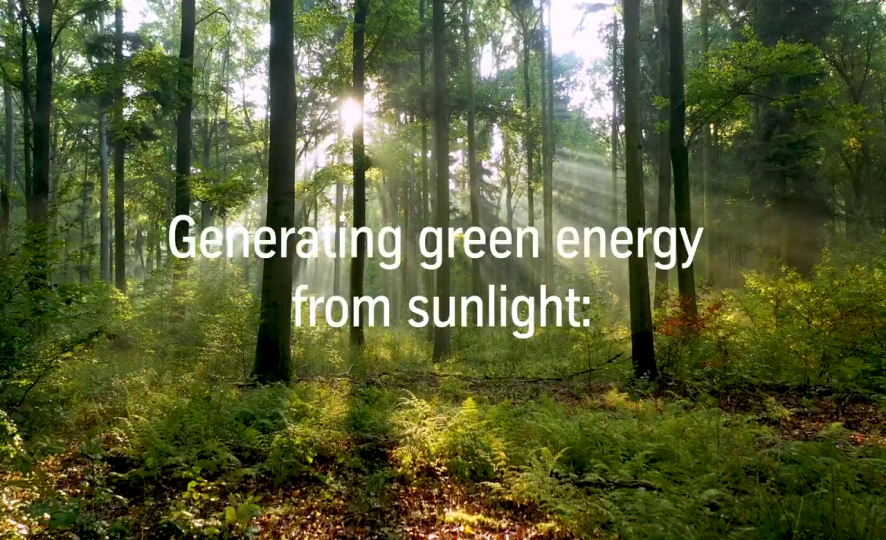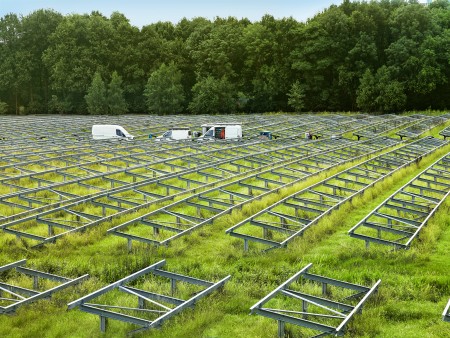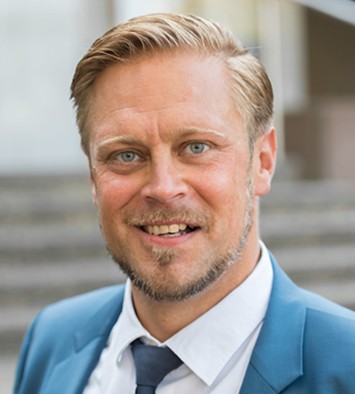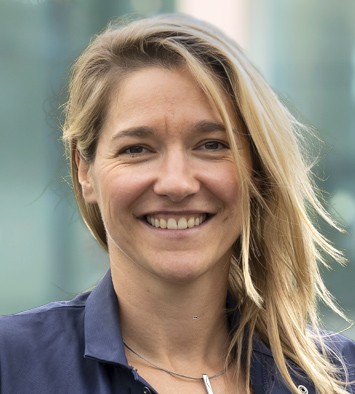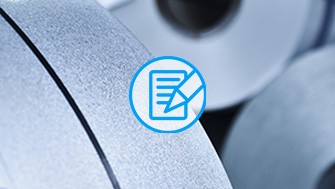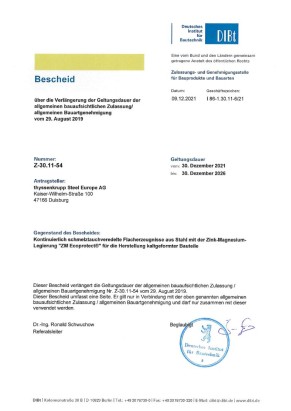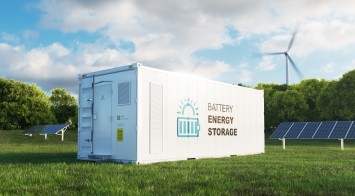Robust supporting structure made from high-quality steel with effective corrosion protection.
ZM Ecoprotect® Solar: The steel for PV substructures

Your solar farm needs to generate green energy both economically and sustainably. To do so, it requires a robust supporting structure made from high-quality steel with effective corrosion protection. With ZM Ecoprotect® Solar, thyssenkrupp Steel now offering high-performance, zinc-aluminum-magnesium-coated steels for PV mounting systems – durable, robust and sustainable.
Durable corrosion protection for mounting structures of solar installations
In order to advance the energy turnaround in Europe in a decisive way, significantly more photovoltaic capacity will have to be installed over the coming years than has been the case to date. Solar systems usually last for 20 to 25 years. Given these long operating times, high-performance steel substructures are required in particular for the solar modules of photovoltaic ground-mounted systems.
With ZM Ecoprotect® Solar, thyssenkrupp Steel is now offering a zinc-aluminum-magnesium-based corrosion protection solution that is significantly more effective than conventional hot dip galvanizing, and can withstand almost anything that the weather can throw at it.
Proven standard
ZM Ecoprotect® Solar is a further development of the tried-and-tested ZM Ecoprotect® zinc-aluminum-magnesium coating, which has already proven itself in the construction industry for decades.

Resistant to corrosion
ZM Ecoprotect® Solar offers several advantages compared to pure zinc coatings. Thanks to the addition of magnesium, the application thickness can be significantly reduced compared to conventional zinc coatings, while offering equivalent corrosion protection and even higher-quality protection at cut edges and drilled holes.
This is possible because ZM Ecoprotect® Solar forms a particularly resistant and durable protective layer on the steel surface, thus protecting the steel in corrosive atmospheres. As a result, the new coating is ideal for steel fabrications in outdoor applications.
Tried-and-tested quality for steel structures
The excellent properties of the coating are confirmed by the building regulations approval from the German Institute for Construction Technology (DIBt) and tests by the Karlsruhe Technologies Institute (KTI). For this purpose, an alternate climate test – among other procedures – was carried out on the coated steels to demonstrate the good corrosion resistance of the coatings.

Guaranteed service life for steel frames made of profiles
All scenarios for the expansion of photovoltaics point to an enormous demand for steel in Europe. With ZM Ecoprotect® Solar, we are responding to the needs of an attractive and, above all, sustainable market trend in the field of renewable energies. Consequently, we are supporting emission-free power generation using photovoltaics.
The new coating is the consistent economic further development as an alternative to batch galvanizing. The guaranteed service life of up to 25 years also leads to low maintenance expenditure on the PV ground-mounted systems.
ZM Ecoprotect® Solar: Available steel grades, coatings and dimensions for ground-mounted photovoltaic systems
Hot-dip coated structural steel
DIN EN 10346
| Dimensions | |||
|---|---|---|---|
| Steel grade designation |
Coatings in g/m2 |
Thickness1 from _ to in mm |
Width1 from _ to in mm |
| S220GD |
ZM310, ZM430 | 0.60 – 4.00 | 700 – 1,560 |
| S250GD |
ZM310, ZM430 | 0.60 – 4.00 | 700 – 1,560 |
| S280GD |
ZM310, ZM430 | 0.60 – 4.00 | 700 – 1,560 |
| S320GD |
ZM310, ZM430 | 0.60 – 4.00 | 700 – 1,560 |
| S350GD |
ZM310, ZM430 | 0.60 – 4.00 | 700 – 1,560 |
| S390GD | ZM310, ZM430 | 0.60 – 4.00 | 700 – 1,560 |
| S420GD | ZM310, ZM430 | 0.60 – 4.00 | 700 – 1,560 |
| S450GD | ZM310, ZM430 | 0.60 – 4.00 | 700 – 1,560 |
| S550GD | ZM310, ZM430 | 1.80 – 3.00 | 700 – 1,560 |
Mild steel
DIN EN 10346
| Dimensions | |||
|---|---|---|---|
| Steel grade designation |
Coatings in g/m2 |
Thickness1 from _ to in mm |
Width1 from _ to in mm |
| DX51D | ZM310, ZM430 | 0.60 – 3.00 | 700 – 1,560 |
| DX52D | ZM310, ZM430 | 0.60 – 3.00 | 700 – 1,560 |
| DX53D | ZM310, ZM430 | 0.60 – 3.00 | 700 – 1,560 |
| DX54D | ZM310, ZM430 | 0.60 – 3.00 | 700 – 1,560 |
| DX56D | ZM310, ZM430 | 0.60 – 3.00 | 700 – 1,560 |
Micro-alloyed steel
DIN EN 10346
| Dimensions | |||
|---|---|---|---|
| Steel grade designation |
Coatings in g/m2 |
Thickness1 from _ to in mm |
Witdh1 from _ to in mm |
| HX260LAD | ZM310, ZM430 | 0.40 – 6.00 | 700 – 1,560 |
| HX300LAD | ZM310, ZM430 | 0.40 – 6.00 | 700 – 1,560 |
| HX340LAD | ZM310, ZM430 | 0.40 – 6.00 | 700 – 1,560 |
| HX380LAD | ZM310, ZM430 | 0.40 – 6.00 | 700 – 1,560 |
| HX420LAD | ZM310, ZM430 | 0.40 – 6.00 | 700 – 1,560 |

